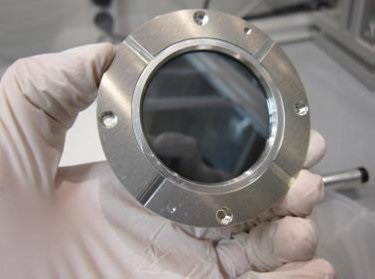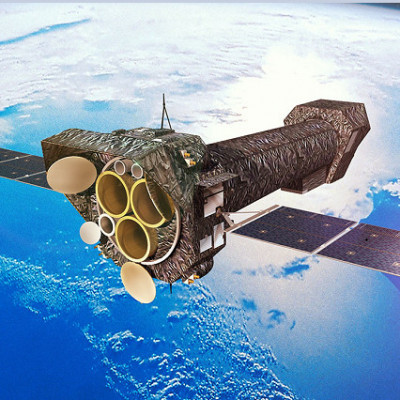The applicability of the filter for the ATHENA (Advanced Telescope for High Energy Astrophysics) telescope is being tested.
It is designed to let X-rays pass through it while blocking out other wavelengths, enabling the precise imaging of celestial objects. These filters are extremely fragile, so they are typically provided with a metal mesh support. During the nine-month project, Canatu will develop a fully CNT-based X-ray filter with a totally new support structure providing higher transmittance compared to metal mesh.
The new filter is mounted on a metal frame and blocks the UV/VIS/IR radiation while offering high X-ray transmittance. It will be used in front of X-ray detectors to exploit their high sensitivity and enable the precise imaging of celestial objects.

The CNT-based X-ray filter.
The CNT-based support structure provides higher X-ray transmittance and is characterised by high mechanical strength, vacuum compatibility and thermal stability. It is also able to withstand pressure differentials and is chemically inert.
Canatu will collaborate with Ametek Finland and the University of Palermo (UNIPA) building on an earlier project on optical filter development for ESA.
“We look forward to our continued collaboration with ESA on this exciting new project,” says Ilkka Varjos, CTO of Canatu. “Our expertise is in adapting our CNT network structures for different contexts and uses and his project gives our platform technology yet another opportunity to demonstrate its versatility, reliability, and feasibility.
“Canatu CNTs have significant potential for a variety of new applications in the fields of X-ray astronomy and beyond,” added Alessandra Ciapponi, ESA optoelectronic engineer. “We will verify these and demonstrate the technology’s readiness for a space applications.”
To evaluate the effective capability of the optical samples will undergo rigorous testing including vibration tests, X-ray transmittance tests, and radio frequency (RF) absorption measurements.
The overarching purpose of the ATHENA mission is to answer key questions in astrophysics about how galactic clusters and galaxies are formed, as well as how black holes grow and shape their surroundings. Its launch is planned for 2033.
Read the original article on Innovation in Textiles.
